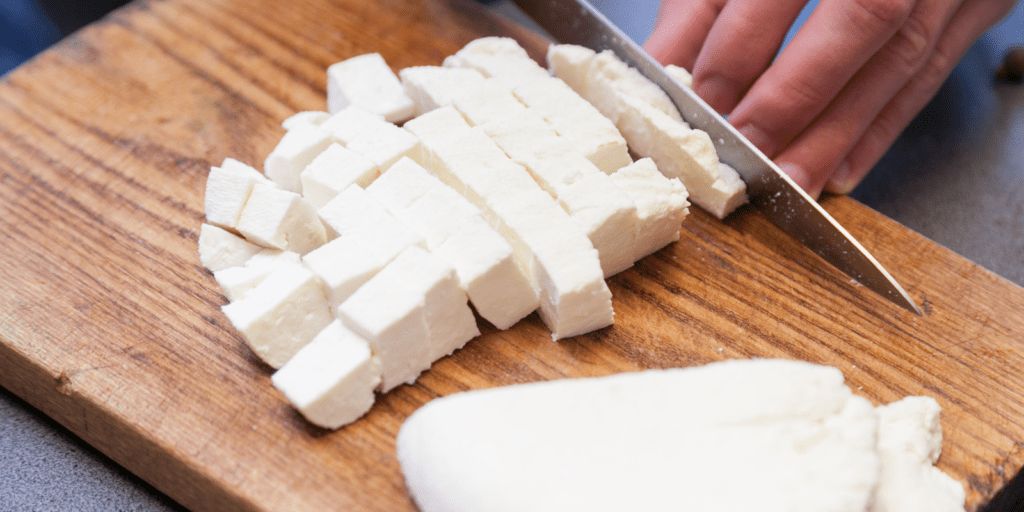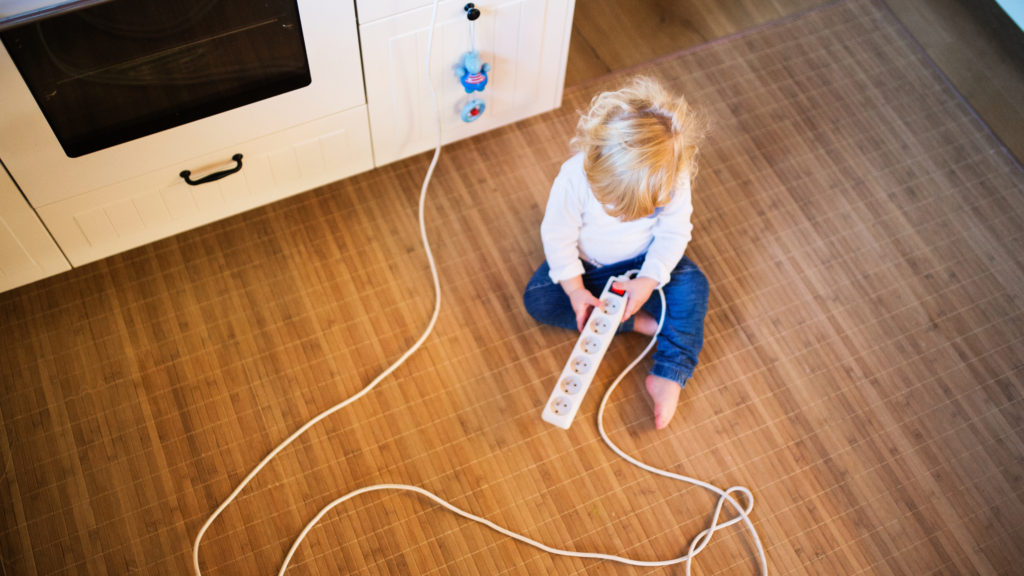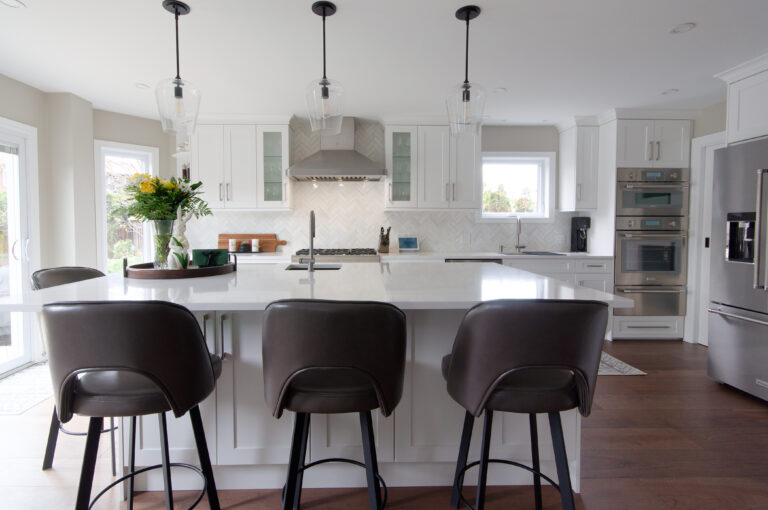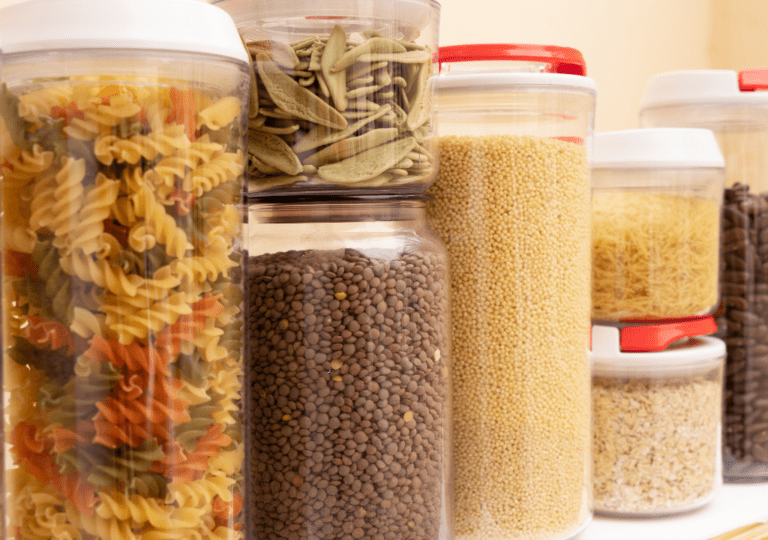Safety in the kitchen is super important for avoiding all sorts of injuries and hazards. We hear ‘safety first’ so often, yet we tend to forget.
The kitchen is a space full of inventiveness and creation, but just like everything else, there are hazards – way more than any other space in the home.
The list of dangers in the kitchen is huge. And to avoid possible injury there are some precautions you can take, some of which include creating a set of rules and sticking to them.
So, in this article, we’ll go through some basic best practices that promote safety in the kitchen along with some ways to avoid those possible injuries. With that in mind, let’s dive straight into the first and most important step – rules!
Start With a Set of Kitchen Safety Rules
Food is arguably the best way to bring people together! And putting a meal together is a daily thing for many. However, some overlook the risks in the kitchen.
Following best practices for kitchen safety is essential and the best way to do that is to create a set of rules. Many have an unspoken and unlisted set of rules for the kitchen but forget them when something goes wrong. So, it’s best to have them written down and keep going back to them for reference.
We made it easy for you and have provided a short list of kitchen safety rules you can either copy or use as a reference to write down your own.
1. Clean as You Go
Cleaning as you go is a good habit to develop and stick to. It provides you with a clean working space as you go through each step, and it won’t leave you with a giant mess to clean up at the end.
So, wipe down your cutting boards, put scraps in the compost bin, and stack your dirty dishes beside the sink.
Clean the workspace after each step. A clear workspace is a safe one.
2. No Running in the Kitchen
This one is self-explanatory, and more for the kids.
You can trip when running or slip and burn yourself on a hot pan with hot oil splattering all over the place – including you – as you try to catch yourself from falling.
There are too many possible injury scenarios to list for this one, so make this one a priority.
3. Have Oven Mitts or a Dry Cloth Handy
When grabbing something off the stove or out of the oven, it’s good to have oven mitts or a dry cloth handy so you don’t burn yourself.
Burns and cuts are the most common injuries in the kitchen, so you’ll read more about them later.
4. Keep Your Face and Body Clear from a Hot Oven
The oven can let out a burst of steam when opening the door. Since heat rises, this can be especially painful when you put your face right above the oven door as you open it.
Open the oven door and wait 2-3 seconds for the burst of heat to rise and escape, then look into the oven.
5. Tilt the Lid Away from Your Body
Just like when opening a hot oven, your hot pots and pans should be treated the same as the oven when using a lid. However, in this situation, you don’t only have hot steam coming up, but also condensation dripping.
Lift the lid off a boiling pot tilting away from your body and make sure your face is not directly above the hot pot or pan. This way you control which side lifts first, controlling which side the steam comes out of, and which side the condensation drips down.
Lifting the lid by tilting it away from yourself will ensure the condensation drips down away from you avoiding a liquid burn.
6. Turn the Pan Handles Away from You
Panhandles can get in the way when working near the stove. One accidental bump against the handle can send a hot pan flying, including any hot liquids (like oil).
Prevent dangerous spills by turning panhandles away from you.
7. Don’t Touch Your Face After Washing Your Hands
Avoid touching your face after washing your hands. Pro chefs use their shoulders when they want to itch their faces. If you end up itching your face with your hands, make sure to wash your hands again before getting back to work on your recipe.
Good hygiene is key in the kitchen, we’ll get into that a little more later.
8. Tie Back Long Hair
Nobody likes hair in their food. If you have long hair, tie it back to lower the chance of it landing in your food and to ensure your view isn’t blocked.
9. Keep your nails clipped and clean
Keeping your nails short and clean is one of the top hygiene priorities next to washing your hands. That’s because the area under the fingernails is like a nesting site for bacteria.
While each hand is home to hundreds of thousands of bacteria, the fingertips harbour that much per fingernail.
So, keep your nails short and wash your hands often so that you don’t have all those germs transferring into your food.
10. Unplug Small Appliances Right Away
Unplug small appliances like blenders and toasters right after you’re done using them. This can protect their life span because the more items you have plugged in around the house, the more susceptible they are to damage through an unexpected power surge.
While the risk of an electrical fire from small appliances is small when they’re in good working condition, the only way to ensure that risk is eliminated is to keep them unplugged while not in use.
11. Don’t Leave the Stove Unattended
Leaving the stove unattended while it’s on is one of the biggest causes of house fires. That’s because this is also one of the most common mistakes that people make. They rush because they’re late for work and forget to pay attention to the stove or lie on the sofa and take a catnap.
Often people think they can turn their backs for just a second, but that’s just enough to start a house fire. Never leave food unattended when baking or cooking.
Last but not least is to keep your stove free from any flammable items.
Hygiene in the Kitchen
Now that we’ve covered a few rules that we think are good to include in your set of kitchen safety rules, let’s get into some hygiene.
As we mentioned before, washing your hands often and keeping your fingernails short and clean is paramount to hygiene in the kitchen. You would think that it’s obvious and common sense, but many people forget this part.
Don’t just wash your hands before handling food, but also wash them when going from handling veggies to handling raw meat to avoid cross-contamination.
The chart below shows an easy-to-follow process for washing your hands.

Which Clothes are Safe to Wear in the Kitchen?
Many people don’t really ask themselves what to wear when working in the kitchen. Most only start wondering about the answer after something bad has happened or when they see it in a guide like this. So, let’s get into it.
Ensure you wear an apron to keep your clothes clean. If you don’t have an apron, an old shirt will be fine, as long as it’s not too big or too loose.
Loose clothing can be quite dangerous. For example, baggy sleeves can get caught in mixer beaters and other equipment, or worse, catch fire!
You can check out what Amazon has for aprons if you have neither an apron nor an old shirt.
Wearing a hairnet is also a good idea to prevent hair from falling into your meal.
And lastly, wear shoes in the kitchen. We can’t express enough how important this step is! For comfort and ergonomic safety, shoes that have good shock absorption will help greatly with being in the kitchen for hours at a time.
Shoes will also help greatly with the handling of knives! Have you ever dropped a knife and just barely missed your foot? Wear enclosed shoes just in case you don’t miss your foot the next time you drop your knife.
Speaking of knives, let’s get into some basic guidelines for knives.
Keep Your Knives Sharp
If you prep meals in the kitchen daily, you’ll want to keep your knives sharp by sharpening often. Once a week should be just fine.
Failing to sharpen your blade can lead to chips in the sharp end, which then you’re left with either disposing of the knife, or gradually sharpening it out over the course of multiple sharpening sessions. However, the downside of sharpening out chips in the blade is that you’ll have less of the blade left.
The upside is that this is convenient to consider resetting the angle of your blade since you’re doing the heavy work anyways. Here’s a great article about knife edges by kitchenknifeguru.com, even showing knife edges under a microscope!
Keeping your knives sharp is also important because – believe it or not – a dull knife is more dangerous than a sharp one! Here’s why…
A dull knife forces you to use more pressure, making it easier to slip and cut something other than your food…like your fingers.

Cutting Food Safely
So now that your knives are sharp, let’s talk about some safe techniques for using your knives when you’re actually cutting your food.
Whenever you’re handling your knives your number one focus should be to prevent injury to yourself and everyone around you!
So, always slice away from your hands and mind your fingertips! In case you do slip or miss, you don’t want your hand to catch the sharp knife.
Next, an easy way to mince safely is to keep the tip of the knife on the cutting board. When chopping, curl your fingers under and hold the food with your fingertips, guiding your blade with your knuckles.
NOTE: Pay extra attention to steak knives, they’re extremely sharp and meant for cutting meat!
And we know it’s tempting, but resist licking off any spreads or cream cheese off the knife. Cutting your tongue is no fun.
Lastly, ensure your chopping board is secure and that you choose the right knife for the task at hand. Securing the chopping board is as simple as dampening a cloth and placing it underneath.
Now that you’ve cut up your food, let’s get into some cooking safety guidelines to follow.

Cooking Safety
Cooking safely is mostly about paying attention to what’s happening around you and thinking a little bit ahead.
We already mentioned a few examples earlier like turning away panhandles from your body, opening the lid by tilting it away from yourself and waiting for the burst of heat to escape the oven when opening it.
Now we’ll go into just a few more kitchen safety tips when cooking:
- When boiling water or sauce, stir away from your body to avoid any splashing onto yourself to prevent liquid burns – which hurt more than dry burns.
That’s because steam has the capacity to carry 4000 times the heat that dry air can. Also, dry burns stop burning you the moment contact separation happens, but hot liquid keeps burning you until the liquid cools down enough or you wipe it off.
That being said, be even more careful when handling hot liquids or steam.
- The above reminds us about this next one: to clean up spills immediately! Depending on the spill, it could create unnecessary smoke, or you could slip and fall.
You don’t want to start cooking just so you can eat hospital food instead of the meal that you intended to make.
- Now, when cooking, have 2 cutting boards that you use, not just one. Using one cutting board for your veggies, and the other for fish, poultry and meat will prevent cross-contamination.
Next, we want to walk you through some electrical safety rules which you might not have thought of.
Electrical Safety
Electricity is not that hot a topic in the kitchen since the kitchen is all about food and the fancy tools and gadgets you get to handle, nevertheless, electrical safety has the same priority as any other safety topic.
Let’s dive in:
- Never stick a fork or knife into a toaster to get food while it’s plugged in! You can get electrocuted. Unplug the toaster, wait a few minutes for it to cool down, then flip it upside down to get your food out.
- Put grease fires out using baking soda or salt. Don’t use water, flour, or sugar, unless you want fireworks inside your house. If the fire is too big for some baking soda or salt, use a fire extinguisher!
- Don’t use extension cords in the kitchen. It’s way too easy to spill and make electrical shock accidents happen.
- Keep wet hands and liquids away from all outlets! Again, this could lead to an electrical shock!
Lastly, we want to walk you through some fire safety and help you be ready if you ever encounter one.
Fire Safety
When it comes to fire safety, the highest priority is to have working smoke and carbon monoxide alarms.
Why not only a smoke alarm? If you have a gas furnace, hot water tank, or gas stove, you’re going to need it. That’s because carbon monoxide has no smell and is known as “the silent killer,” and it’s as dangerous as it sounds!
Now, the next thing you’re going to want to make sure you have is a working fire extinguisher!
Grease and electric fires are some of the most dangerous, and they’re not that easy to put out since both need extra caution.
Yes, you can put out small grease fires with baking soda or salt, but if that fire gets even a little too big for some baking soda to handle, you’re going to need that fire extinguisher along with a phone to call 911!
When you get ahold of the fire department stay on the phone until they arrive.
Final Thoughts
We’ve gone through quite an extensive guide in this article, and yet we’ve only scratched the surface.
Yes, there’s a lot, but kitchen safety doesn’t have to be very complicated. All you really need is to pay attention to what’s happening around you, think ahead a little bit and use common sense.
Also, reading manuals might not be a fun way to spend part of your afternoon, but it can save you from sparking up your microwave, melting a dish or even causing a fire.













